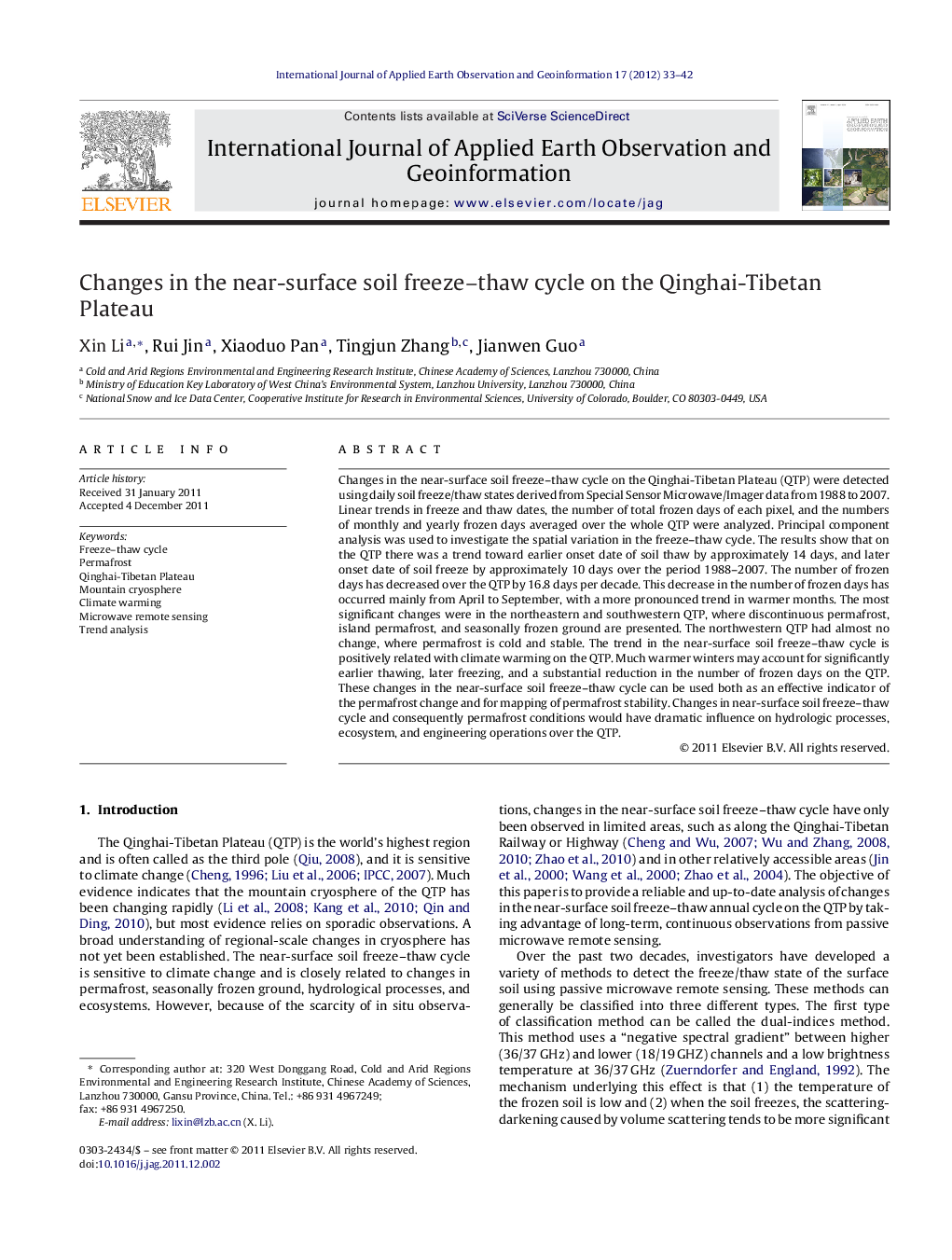| Article ID | Journal | Published Year | Pages | File Type |
|---|---|---|---|---|
| 4465102 | International Journal of Applied Earth Observation and Geoinformation | 2012 | 10 Pages |
Changes in the near-surface soil freeze–thaw cycle on the Qinghai-Tibetan Plateau (QTP) were detected using daily soil freeze/thaw states derived from Special Sensor Microwave/Imager data from 1988 to 2007. Linear trends in freeze and thaw dates, the number of total frozen days of each pixel, and the numbers of monthly and yearly frozen days averaged over the whole QTP were analyzed. Principal component analysis was used to investigate the spatial variation in the freeze–thaw cycle. The results show that on the QTP there was a trend toward earlier onset date of soil thaw by approximately 14 days, and later onset date of soil freeze by approximately 10 days over the period 1988–2007. The number of frozen days has decreased over the QTP by 16.8 days per decade. This decrease in the number of frozen days has occurred mainly from April to September, with a more pronounced trend in warmer months. The most significant changes were in the northeastern and southwestern QTP, where discontinuous permafrost, island permafrost, and seasonally frozen ground are presented. The northwestern QTP had almost no change, where permafrost is cold and stable. The trend in the near-surface soil freeze–thaw cycle is positively related with climate warming on the QTP. Much warmer winters may account for significantly earlier thawing, later freezing, and a substantial reduction in the number of frozen days on the QTP. These changes in the near-surface soil freeze–thaw cycle can be used both as an effective indicator of the permafrost change and for mapping of permafrost stability. Changes in near-surface soil freeze–thaw cycle and consequently permafrost conditions would have dramatic influence on hydrologic processes, ecosystem, and engineering operations over the QTP.
► Near-surface soil freeze–thaw cycle on the Qinghai-Tibetan Plateau from 1988 to 2007 was detected from remote sensing. ► The frozen days have decreased about 33.7 days from 1988 to 2007 on the Qinghai-Tibetan Plateau. ► On the QTP there was a trend toward earlier onset date of soil thaw by approximately 14 days over the period 1988–2007. ► On the QTP the onset date of soil freeze lagged by approximately 10 days over the period 1988–2007. ► The trend in the near-surface soil freeze–thaw cycle is positively related with climate warming on the QTP.
